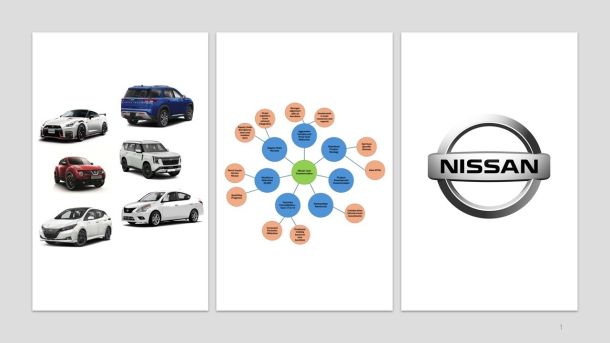Strategy and Foresight Applications in the 13th Century – the 45 Years Challenge.
The Battle of Mohi, on April 11, 1241, was an after Columbus and before Columbus, sort of event. The Mongol Empire ambitions to extend westward never stopped. Over ten years, starting in 1230, the Mongols incursions into Russia and Eastern Europe were firing on all cylinders. It was a longer-term strategy to invade more of Western Europe. Hungary, given its location and capabilities, was a serious test to the aggressive strategy launched from the Asian hurricane. The Hungarian King Béla IV had a painful list of internal and pan-European issues that did not position him well for such a well-equipped enemy on the operational, tactical and strategic fronts. This was a tough test to the European capabilities to push back this threat. On that day, the Hungarian King Béla IV led his forces against Subutai, the Mongols leader at Mohi near the Sajo river.
So, what happened on April 11, 1241 and later?
Long story short, the outcome was a catastrophic defeat to the Hungarian army and nation.
The sophisticated tactics and capabilities of the Mongols were incredibly superior. The element of surprise, innovative horse archery, disciplined formations, agile cavalry, intelligent ambush tactics and swift mobility were all capabilities that hammered the European army.
After the Hungarian king fled to another location, Subutai led his forces to initiate a campaign of ravaging and slaughter causing death and destruction of a significant number of the Hungarian population – estimated between 15% and 50% in some cities.
Surprisingly, by 1242, the Mongols started their withdrawal from Hungary back into Asia due to the death of their great Khan.
King Béla IV then returned to a kingdom in shambles.

Lessons learned from the crisis.
1. The Hungarian army had significantly inferior capabilities compared to the invaders.
2. European army tactics are useless when facing such threats.
3. Need for a major upgrade in fortifications.
4. Lack of unity and collaboration between European political powers.
Scenarios
How did the Hungarian leadership see the future? There are alternative futures.
1. The Mongolian army has gone back to Asia and will not return.
2. It’s a temporary crisis for the Mongols, and they will be back sooner or later.
3. Other enemies will pop-up and will take advantage of a weakened Hungary
4. Hungary will not resume its position as a European power.
Selection & Communication of the Strategic Intent – Transformation.
King Béla IV strategy was to make Hungary significantly stronger than before, especially when the Mongols come back. This required transformation of the army, fortification, architecture and alliances with Europe.
He also believed that there had to be incentives to support the transformation through the Hungarian rich nobility as well. There is not an incremental improvement project assigned to a few of his subordinates. Transformation was from simple earth or wood-based fortifications to a comprehensive stone castle network.
In 1247, he sent his famous letter to Pope Innocent IV announcing the strategy and plan to strengthen the Danube with brand new fortifications.
Strategy Execution – The imperatives.
In hindsight, the journey to transform Hungarian defense and offense capabilities can be split into three phases:
1. Phase 1: Change of Material and Location. In this phase, new fortifications were built using stone – a much stronger material and a game changer. Rich landowners were incentivized with new lands as long as they built similar fortifications. Stone castles were now built on higher grounds to ensure military advantage over enemies.
2. Phase 2: Change of Architecture. In this phase, new arrangements and designs were introduced. Ringed walls, towers, round towers, central towers and others. This change took advantage of phase 1 stone castles models. The change enabled the introduction of early warning signals through fire beacons and smoke; a mechanism that made communication faster than using horses to carry messages. Along side this phase, the King invited different populations to settle down in Hungary and especially at the borders to compensate for lost population and add more strength to the borders.

3. Phase 3: Borders. The two phases above were now implemented at the borders to ensure that all possible routes are secured. This, by design, pushes the risk outside the heart of Hungary – it’s a tactic that avails fighting the enemy way earlier than in 1241.
Strategy Validation – So, what happened in 1285?
It took 45 years to validate the strategic direction initiated by King Béla IV. True leaders create a vision, select a strategy and ensure its sustainable execution regardless of their presence. The king died in 1270. The strategy was put to an actual test in the winter of 1285 with the Second Mongol Invasion led by by Nogai Khan and Tulabuga of the Golden Horde.
- Talabuga’s troops faced the new Hungarian fortifications – a strategy in action. They failed to capture castles or fortified cities. Many smaller defeats followed one another. Talabuga’s weakened army was ultimately defeated at the hills of western Transylvania. It was a transformed army compared to 124, they had higher ratio of knights.
- Nogai destroyed a few forts and walled towns but he he failed to defeat any major fortification. After the defeat of Talabuga’s main column, Nogai’s army arrived too late to help the other leader. Nogai’s forces had already suffered a serious defeat at the hands of local Hungarian troops. After the defeat, Talabuga retreated from Hungary, but his army was ambushed on their return, and within a short period his army had effectively vanished.
Reflections
Strategy cannot be formulated or executed in vacuum. Leadership capabilities is a lifeline to strategy execution. In addition, leadership abilities to imagine a different future creates hope for followers. It is not enough to come up with a vision; its imperative to ensure that all stakeholders are able to imagine this future and how the strategy execution will make this future a reality.



